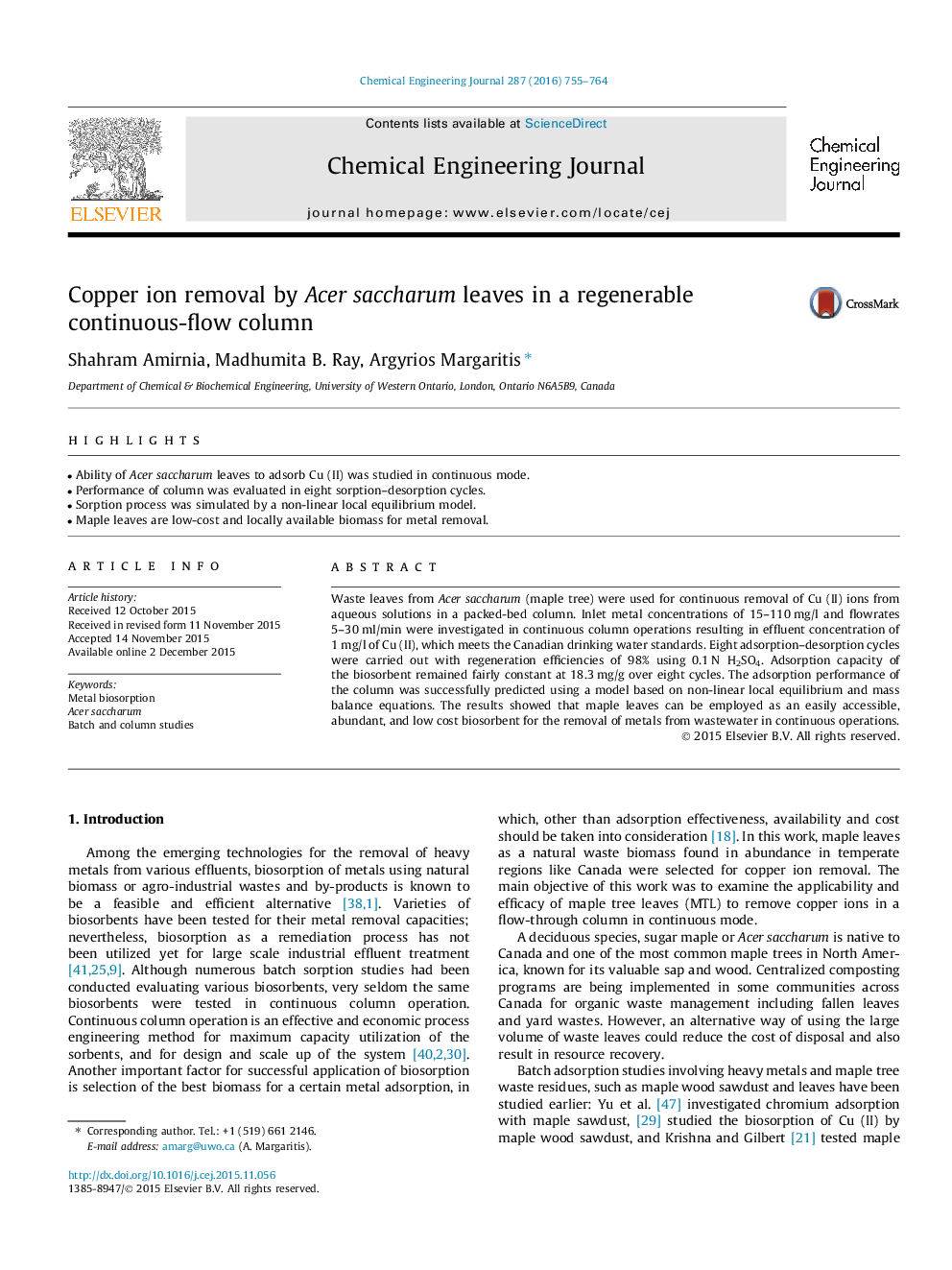| Article ID | Journal | Published Year | Pages | File Type |
|---|---|---|---|---|
| 145919 | Chemical Engineering Journal | 2016 | 10 Pages |
•Ability of Acer saccharum leaves to adsorb Cu (II) was studied in continuous mode.•Performance of column was evaluated in eight sorption–desorption cycles.•Sorption process was simulated by a non-linear local equilibrium model.•Maple leaves are low-cost and locally available biomass for metal removal.
Waste leaves from Acer saccharum (maple tree) were used for continuous removal of Cu (II) ions from aqueous solutions in a packed-bed column. Inlet metal concentrations of 15–110 mg/l and flowrates 5–30 ml/min were investigated in continuous column operations resulting in effluent concentration of 1 mg/l of Cu (II), which meets the Canadian drinking water standards. Eight adsorption–desorption cycles were carried out with regeneration efficiencies of 98% using 0.1 N H2SO4. Adsorption capacity of the biosorbent remained fairly constant at 18.3 mg/g over eight cycles. The adsorption performance of the column was successfully predicted using a model based on non-linear local equilibrium and mass balance equations. The results showed that maple leaves can be employed as an easily accessible, abundant, and low cost biosorbent for the removal of metals from wastewater in continuous operations.
